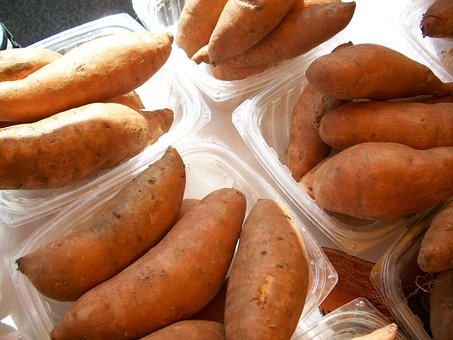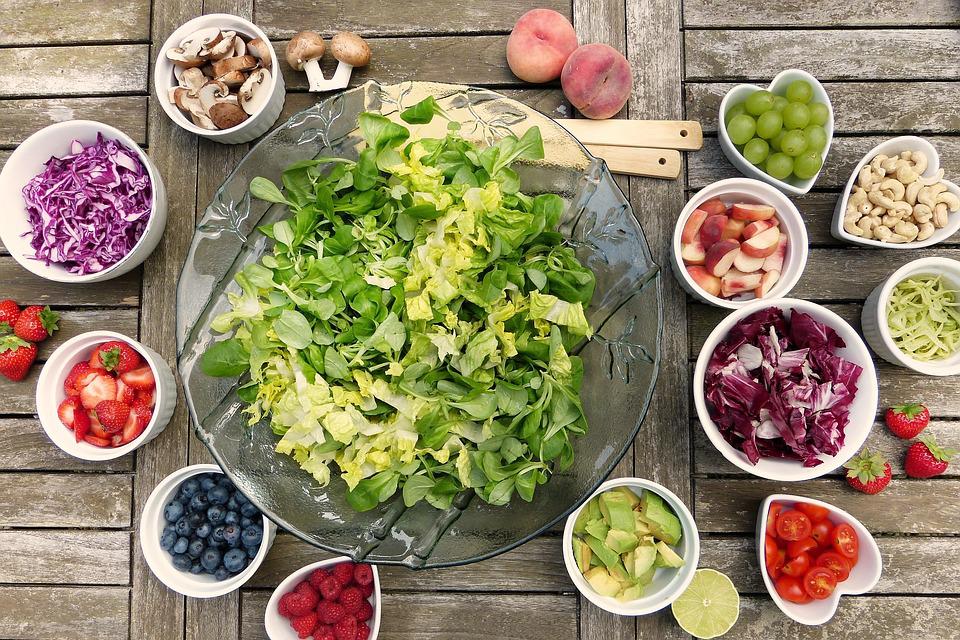
For the majority of individuals, the term “starch” brings to mind succulent, caloric-rich dishes like pizza, spaghetti, and doughnuts. Repeatedly being told that starches are not good for us and should be avoided if we want to remain fit and stay healthy. Not all starch is created equally, however. An example of a beneficial starch is resistant starch, which can bring a lot of health benefits.
Resistant starch has many benefits, from aiding in weight loss to regulating blood sugar, and it is easy to get into your diet. It can be located in multiple places and is probably included in some of the dishes that you eat regularly. Find out all you need to know concerning this healthy form of starch and how to incorporate it into your meals.
What is Resistant Starch?
What is the deal with resistant starch and how does it function? A form of starch that does not get completely digested and taken in by the guts or small intestine is known as resistant starch. Rather than being absorbed into the bloodstream, the food that enters the colon is changed into short-chain fatty acids which provide nutrition to the helpful microorganisms present in the intestinal tract.
Since it is broken down and used for energy in a manner similar to dietary fiber, it provides the same type of health advantages. Some research has indicated that resistant starch may be beneficial in managing blood sugar levels, as well as providing a feeling of fullness and improving digestion.
Some people think that this food is suitable for those on a keto diet and low-carb regimen, as it does not increase blood sugar levels and does not affect the state of ketosis in the body since it is not digested. The most advantageous aspect of resistant starch is that it is conveniently accessible in many different foods and can be used to create a varied and nutritious diet.
The Discovery of Resistant Starch
Investigations of the advantages of starch and indigestible starches started many years ago. Investigations were conducted into cancers of the digestive tract in the beginning, and it was observed that tribes and inhabitants in East Africa had surprisingly low occurrences of colon cancer.
It was quite extraordinary considering that these societies were not consuming a lot of fiber, which prior to then was believed to be essential for protection from colorectal cancer.
The dietary habits in East Africa included yams, sweet potatoes, corn, and bananas which are all mostly high in starch. These are all foods that contain a meager amount of fiber and an excessive amount of carbohydrates, which many people desire to avoid.
It was not only a safeguard versus colorectal cancer; the East African communities had hearty cardiovascular systems and few reports of diabetes as well!
Investigators were aware that there must be an element which was not connected to fiber that was inducing their impressive wellbeing and unreasonably reduced levels of colon cancer. The answer: an unusually high starchy food intake.
Jumping ahead to the present day, it is now well-established that a diet that contains nutritious starch (particularly in the form of resistant starch) can lead to major improvements in health.
Resistant Starch Foods
There are four common types of resistant starch foods that are found in the diet, including:
- Type I: Found in the endosperm of whole grains, seeds and legumes
- Type II: Found in raw potatoes, green bananas and high-amylose maize starch
- Type III: Formed by a process called retrogradation through the cooling of cooked starches, such as potatoes or rice
- Type IV: Chemically modified resistant starch found in certain processed foods
What foods contain a lot of resistant starch, and how can I incorporate them into my meals? Obtain this useful inventory of resistant starch foods and go to the supermarket to begin accumulating these beneficial gut ingredients.
1. Cooked and Cooled Potato
When boiled potatoes are allowed to cool, they go through a process named retrogradation which leads to a larger quantity of resistant starch. White potatoes hold the most significant level of resistant starch as compared to sweet potatoes or other root vegetables. Resistant starch can be found in raw potato starch, which is a product that comes from potatoes.
2. Cooked and Cooled Rice
Any kind of rice which is cooked then left to cool down is referred to as resistant starch rice. Choose brown rice instead of white rice for the highest benefit of vitamins, minerals, and dietary fiber.
3. Legumes
Vegetables, like beans, peas and lentils, contain a significant amount of resistant starch. In addition, these food items also have a high content of protein and fiber, which helps promote heart health, build up muscle and encourages normal digestion.
4. Oats
Oats are a prime provider of resistant starch, and they also have beta-glucan, a kind of soluble fiber that can be a plus in combating obesity and metabolic syndrome.
5. Green Bananas
Unripe bananas are jam-packed with resistant starch. Although not as sweet as when they have ripened, it is possible to cook green bananas in multiple ways such as baking them, boiling them, or adding them to shakes for a considerable amount of indigestible starch.
6. Hi-Maize Flour
This particular flour, made out of corn, is full of resistant starch and can be used to add more fiber to your favorite dishes and pastries. Replace a portion of traditional flour with Hi-Maize flour and enjoy.
7. Other Starches
The process of retrogradation has enabled cooked and cooled starches, including resistant starch pasta, to possess resistant starch. Choose whole-grain options and combine with plentiful amounts of vegetables, proteins, and healthy fats to increase the nutritional value of your meals.
The Health Benefits of Resistant Starch
Resistant starch is just too good to pass up. There are numerous advantages to overall health that make it effortless to incorporate into your diet. Here are a few of the most important benefits:
1. Stay Full, Longer
Resistant starch has the same effect as diets that contain large amounts of fiber or protein in that it can reduce feelings of hunger for an extended period of time. Given the craze surrounding low-carb diets right now, you might be tempted to steer clear of foods that have a high content of starches. But, the truth is that eating healthy, starched foods can actually be beneficial to your weight loss journey, as they help diminish cravings and leave you feeling more energized.
Research has revealed varying results when it comes to the impact of resistant starch on after-meal fullness, with some investigations demonstrating no change and others emphasizing a substantial surge.
When one examines the research more carefully, it’s plain that the disparity comes from the origin of the starch being utilized. Investigations which employed resistant starch from loaves of bread, maize, and wheat did NOT indicate an amplified sensation of satiety. Nevertheless, surveys conducted with potatoes with resistant starches and potato starch uncovered a noteworthy growth in satisfaction after eating.
This is great! You can now relish white potatoes again if you prepare them correctly to increase their resistant starch. The same goes for white rice.
Here’s what you need to do to get the most bang for your buck (at least from potatoes and rice):
- Step 1: Boil the potatoes or white rice, then…
- Step 2: Let the potatoes or rice sit in the fridge for several hours to cool.
It is critical to cool the food since it permits the resistant starch to swell. So plain boiled potatoes, mashed potatoes, etc. are inadequate. It is strongly suggested to also try: root vegetables, green bananas, and beans.
2. Boost Mineral Absorption
Resistant starch also has the added benefit of enhancing mineral uptake. Fundamental minerals, such as calcium and iron, are commonly found in food, making it difficult for the body to take in. Additionally, there are usually two minerals lacking in people’s dietary intake.
When gut bacteria break down starch, it makes for an environment in which minerals can be taken in more effectively. A study conducted on resistant starch showed that a great deal more iron and calcium was absorbed from the colon.
3. The Bathroom-Related Benefits
Apart from the advantages already mentioned, resistant starch can also enhance digestive system functioning.
Digestive problems like an irregular bowel, constipation, or diarrhea can be alleviated by consuming more resistant starch in one’s eating regimen. Resistant starch is not digested in the small intestine and thus when it reaches the large intestine, it is utilized as nourishment for our beneficial gut microorganisms.
These bacteria are crucial for proper digestion. They work to hinder diarrhea, cramps, and foster the production of soft, bulky stools. This makes resistant starch an excellent choice for anyone who has been dealing with difficult and infrequent bowel movements.
4. Cancer Prevention
One of the main motivations for incorporating resistant starch into one’s nutrition plan could be the potential to shield oneself from a serious adversary: colorectal cancer.
Currently, colorectal cancers are the third most widespread type of cancer globally and are the second most fatal for both genders in America.
This is where a great deal of research on resistant starches has been carried out – notably on how they can better bowel function, bolster beneficial bacteria populations, and ultimately thwart the formation of intestinal tumours. The findings from these investigations are consistently positive.
These studies investigate the composition of gut microbes after breaking down starchy ingredients that are resistant to fermentation. If bacteria creates strange proteins and acids, it indicates an unhealthy internal environment as it has created a bad atmosphere within the large intestine. Nevertheless, if bacteria produce standard outputs and reduce the quantity of acid, the intestines will be safeguarded and in good condition.
Studies conducted recently report reduced cancer-associated proteins and acids in feces after the ingestion of resistant starch. Studies have begun to demonstrate that resistant starch can improve an undesirable intestinal environment.
It appears to be a positive sign that resistant starch consumption could lead to the staving off of some kinds of colon cancer.
Resistant Starch vs. Fiber vs. Starch
It is understandable why folks have difficulty understanding the distinctions and resemblances between resistant starch, fiber, and starch. Although these dietary components share the same food sources, roles, and advantages, there are some notable discrepancies between them.
What is the fundamental concept of starch, and is it a type of carbohydrate? Glycosidic bonds join several sugar molecules together to create starch, a type of carbohydrate. Starchy goods, like peas, corn, and potatoes, regularly comprise of this, transforming quickly into sugar when it goes into the small intestine.
Instead of being digested in the small intestine, resistant starches pass through to the large intestine where they are transformed into short-chain fatty acids. Due to its indigestible quality, resistant starch does not bring about the same increase in blood sugar as regular starch and has an extensive selection of health advantages. Nevertheless, resistant starch is also derived from many general sources, such as potatoes and rice that have undergone retrogradation.
Indigestible carbohydrates, known as fiber, offer the same advantages as other carbs. Fiber, similar to resistant starch, can have positive benefits for your gastrointestinal system, aid with weight loss, support digestive health, and reduce the risk of chronic disease and colon cancer. Incorporate both into your diet in order to experience the extensive advantages they can bring.
The concept of resistant starch has been around only in the last century, however the use of resistant starch foods has been common practice within various branches of alternative medicine for a while.
A diet based on Ayurvedic practices typically includes traditional grains of rice like basmati, which contain a greater quantity of resilient starch as compared to highly refined white rice. Potatoes, which are a type of food that contains resistant starch, can be included in an Ayurvedic diet and are thought to be calming and will help to fill one’s stomach and make the body more alkaline.
Likewise, in TCM, rice is employed to settle the belly, build up the spleen, and tackle indigestion. Additionally, grains like oats can be used to diminish blood pressure, relieve looseness of the bowels and minimize spontaneous perspiration.
People have been avoiding carbohydrates a lot recently in their dieting and exercise regimens, so the word ‘starch’ likely has a negative connotation for you. Nevertheless, there is a type of starch that is beneficial to one’s health: a certain form of healthy carbs known as resistant starch.














